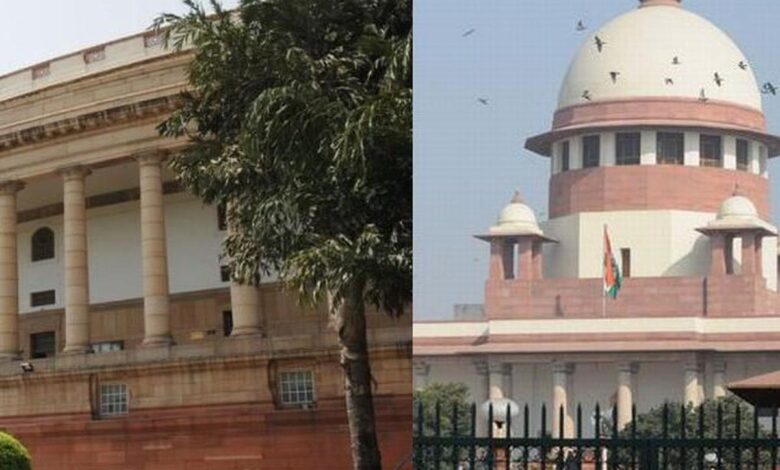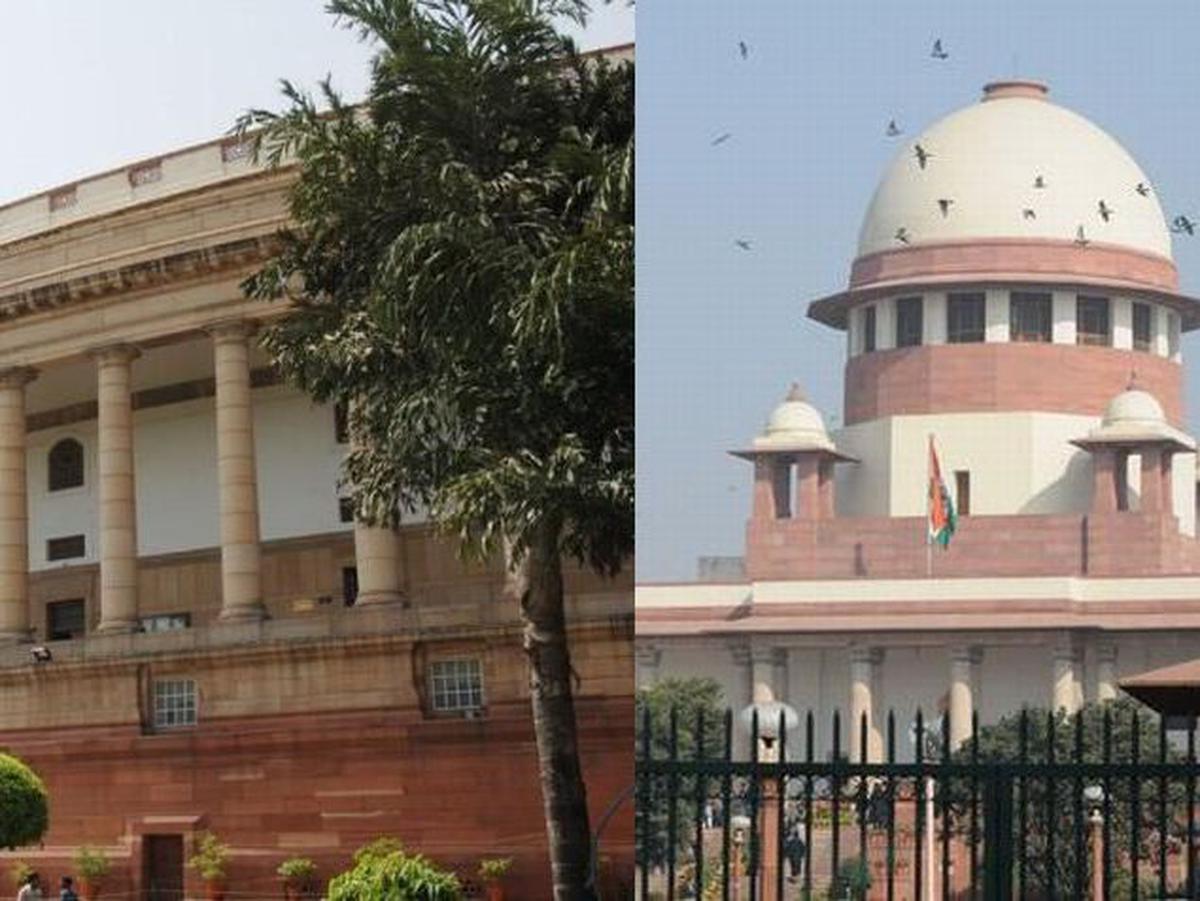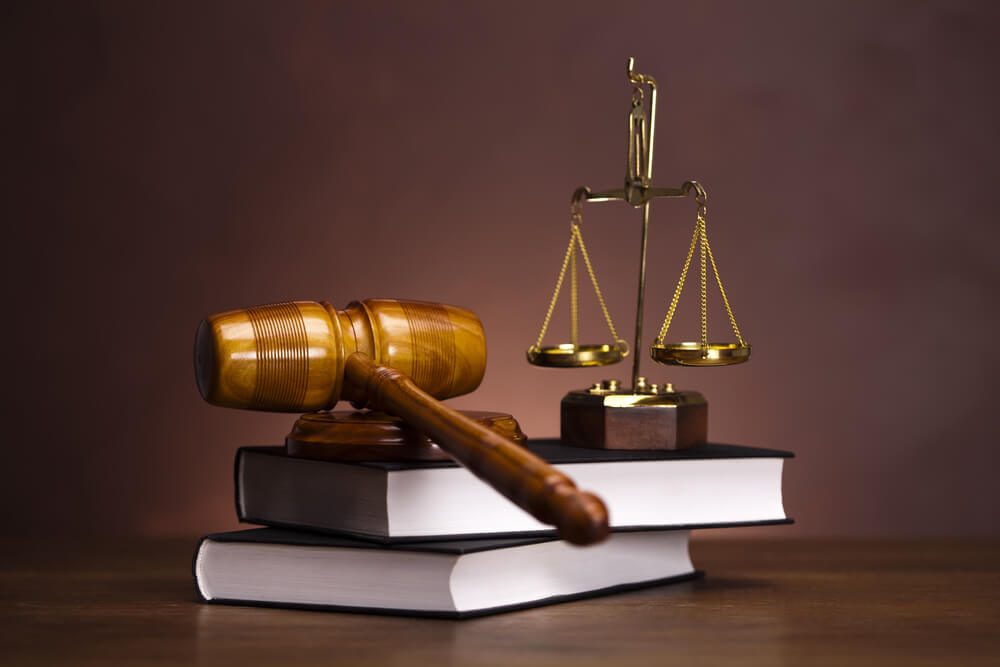First Time In The History Of 75 years of Independent India, Government is head To head with Judiciary. Government is trying to take hostile control of judiciary with NJAC

First Time In The History Of 75 years of Independent India, Government is head To head with Judiciary. Government is trying to take hostile control of judiciary with NJAC. The court has had major concerns about changes in the way justices are selected, the rising backlog, accountability, corruption, issues with access and the expense of justice for ordinary people, and other considerations. This short essay attempts to review some of the most important judicial evolutions and provide light on the court’s contributions to the advancement of democracy and individual freedom in post-independence India.
Following Union Law Minister Kiren Rijiju’s recent statements on the Supreme Court Collegium, the federal government has requested that the top court rethink the nomination of 19 of the 21 names proposed for High Court justices. The Center voiced “serious misgivings” about the apex court collegium’s forthcoming recommendations and returned the papers on November 25. According to reports, five of the ten names returned following the SC Collegium’s reiterations were for Allahabad HC, two for Calcutta HC, two for Kerala HC, and one for Karnataka HC.
The law minister announced on Twitter that two applications for Bombay High Court judges, Santosh Govind Chapalgaonkar and Milind Manohar Sathaye, had been approved. On November 28, the Supreme Court expressed reservations about Rijiju’s views on the collegium method for selecting judges.
What is the collegium system, over which the Centre and the judiciary are at odds? What exactly was the National Judicial Appointments Commission (NJAC), and why was it abolished? In other democracies, how are judges elected? We’ll explain.
What exactly is the collegium system?
The Chief Justice of India (CJI) is the head of a five-judge panel known as the Supreme Court Collegium, which currently consists of the four seniormost justices on the country’s highest court. Two of the seniormost justices of the High Court and the Chief Justice make up a collegium. The top court’s collegium receives recommendations from an HC Collegium about judicial appointments.
The collegium method may result in direct nominations of top attorneys to the Supreme Court or the promotion of High Court judges to the highest court. The collegium system is not governed by explicit law issued by Parliament. Articles 124(2) and 217 of the Constitution govern the appointment of judges to the Supreme Court and High Courts, respectively.
“Every Judge of the Supreme Court shall be appointed by the President by permission under his side as well as seal after discussions with such Supreme court judges and the High Courts in the States as the President might very well consider appropriate for the purpose and shall hold the office until the sixty-five years of age years,” as according Article 124(2), as long as the Chief Justice of India has always been tried contacting before assigning a judge.
According to Article 217, the Chief Justice of India, the Governor of the State, and, in cases where a judge other than the Chief Justice is appointed, the Chief Justice of the High Court, must all be consulted before the President appoints a judge to a High Court by warrant bearing his hand and seal. The names of judges for the High Courts are sent to the central government after being approved by the CJI and SC Collegium. According to a report of sources, the Centre only plays a little part in choosing judges for High Courts or the Supreme Court.
The Intelligence Bureau (IB) can evaluate a government request to decide whether or not a certain solicitor should be promoted. However, if the collegium reiterates such recommendations, they must be implemented, according to the report.
It can also ask for an explanation or raise concerns. Some people have criticized the collegium system for being opaque. It is perceived as a “behind-closed-doors” event with no established standards for qualifying requirements or even the selection process, The Union law minister made a similar statement earlier this month. “I don’t criticize the courts or the judges, but I do present a reality that reflects the mindset of the average Indian.” The collegium system lacks transparency and accountability. Judges and attorneys alike concur with this, according to Rijiju.
Why was the NJAC Act repealed? What was it?
The National Judicial Appointments Commission (NJAC) Bill was proposed in 2014 by the Narendra Modi-led national government. Both chambers of Parliament approved the NJAC Bill and the Constitution (99th Amendment) Bill in the same year. They became active on April 13, 2015. The goal of the NJAC Act was to alter the collegium system and increase the executive’s influence over nominations to the upper courts.
The CJI was to be chosen by the CJI, the Prime Minister, and the Leader of the Opposition in the Lok Sabha. (Chairperson, ex-officio), two other senior SC justices, the Union Minister of Law and Justice, and two other prominent individuals. Nevertheless, a few organizations and organizations representing lawyers petitioned the Supreme Court to strike down the Act.
In October 2015, the Supreme Court’s Constitution Bench, comprised of five judges, deemed the NJAC Act 2014 to be “unconstitutional and void.” By a 4:1 vote, the panel decided that judges would be selected through the collegium method, with the CJI having “the last word.” In December of last year, the law minister stated that there was rising support for the reintroduction of the NJAC Bill.
He said in the Lok Sabha that the Supreme Court Bar Association and some former judges have said that the current collegium procedure of choosing judges is not accurate, transparent, or accountable. I want to make it obvious to the House that NJAC has received a lot of support,” he continued.
The judiciary and administration have long been engaged in a power struggle over judge selection. According to the Constitution, the president must select members of the higher judiciary following “consultation” with the justices of the Supreme Court and the High Court. Since the country’s independence, the Union government has had first dibs on selecting judges.
However, the Supreme Court ruled in 1993 that the administration is bound by the judiciary’s recommendations and established a collegium system made up of the Chief Justice of India and senior Supreme Court justices.
To change this, the Bharatiya Janata Party-led Union government passed a constitutional amendment in 2014 that created a National Judicial Appointments Commission, which would be composed of the chief justice of India, the two seniormost Supreme Court judges, the law minister, and two “eminent persons” in addition to the chief justice and two other senior judges.
However, the Supreme Court overturned this amendment, ruling that it was unconstitutional since it interfered with the judiciary’s independence.
Despite the collegium’s repeated requests, the Center has been withholding names to restore control over the appointment process. The Center is required by law to nominate a candidate when the collegium recommends them. Even though they were recommended together, the Center occasionally chooses to employ some of the collegium’s suggested names while excluding others.
In addition, government officials have become more vocal in their criticism of the collegium system. Kiren Rijiju, the Union Law Minister, has lamented the collegium’s lack of transparency and accountability in speeches. On November 25, he stated that the administration must conduct its due diligence and cannot just follow the collegium’s recommendations.
Judicial response
In the meantime, the judiciary has responded both inside and outside the courtroom. The Supreme Court is presently hearing a contempt case filed by the Advocates Association of Bengaluru because the Center has been holding onto 11 names confirmed by the collegium, the oldest of which is dated September 2021. The organization argued that by failing to do so, it had breached the Supreme Court’s deadlines.
The complaint wasn’t heard until this November, even though it was filed in October of last year. The Supreme Court emphasized in its decision of November 11 that, notwithstanding its misgivings, the Union government must appoint a judge if the collegium recommends him. As a result, “keeping the names waiting is something that is not appropriate,” the bench declared. It asked the Union’s legal secretary to respond with an explanation for the appointment wait times.
The court then declared on November 28 that it anticipates R Venkataramani, the Attorney General, and Tushar Mehta, the Solicitor General, to ensure that the Centre abides with the court’s orders. The bench addressed Rijiju’s comment on November 25 that if the judiciary had a problem with the Centre screening the applicants, they should appoint the judges themselves during the hearing, even though this is what the written decision indicated. It noted that it would make an injunction if required, but asked that the Centre desist from forcing the courts to comply.
edited and proofread by nikita sharma



